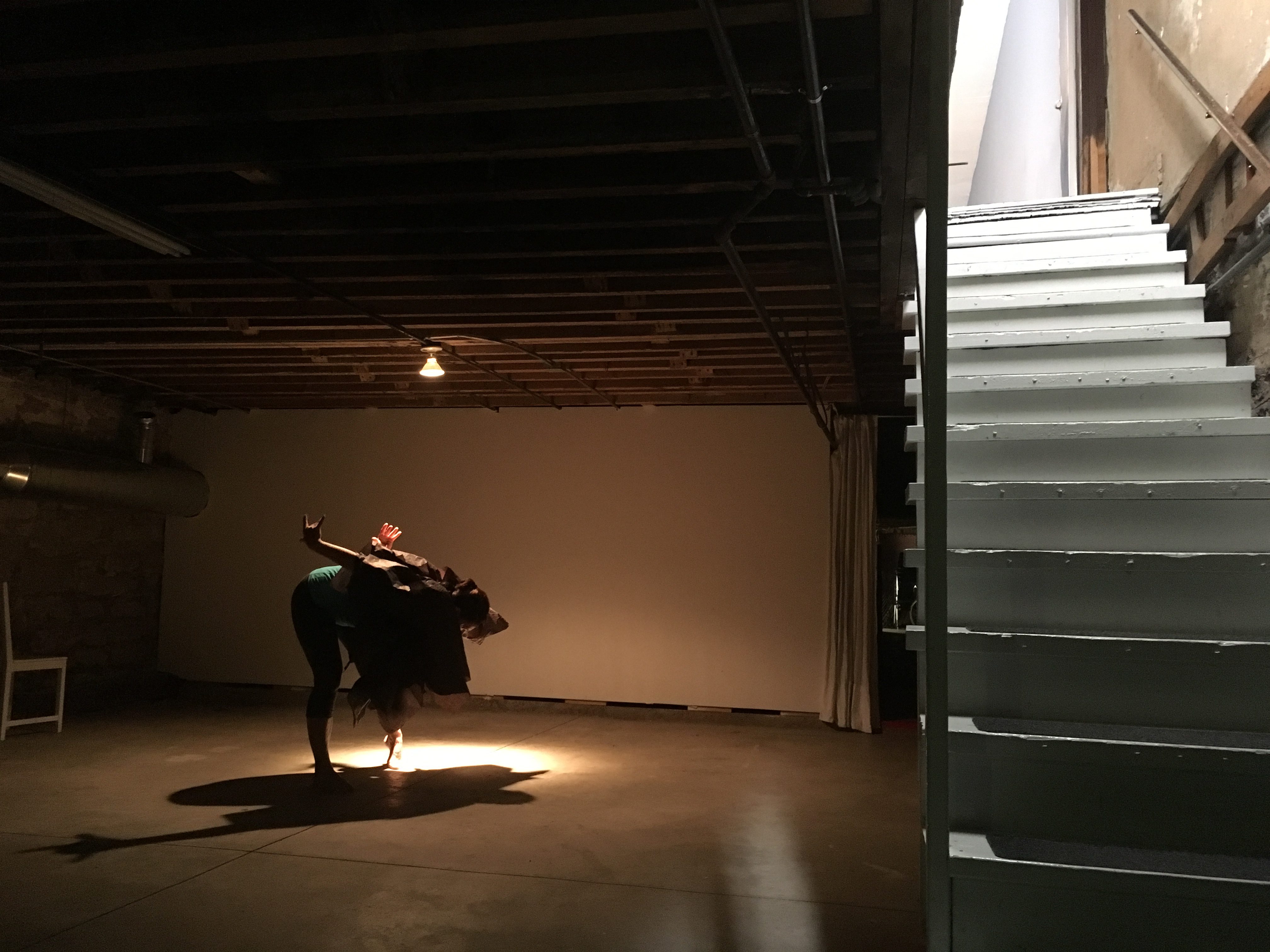CHICAGO — Nearly a year after the Amid Festival, a magical gathering of performing artists grappling with aging bodies, festival curator and Zephyr Dance artistic director Michelle Kranicke presents her latest project Oct. 20-23 at Defibrillator Gallery. Valise 13 originally rose from a curiosity about travel. In selecting the French word for suitcase as her title, Kranicke spent last season thinking about how people pack for a journey, selecting items that present a version of ourselves that is specific to the destination. “When you travel, you’re taking certain things that show the persona that you need to show at this particular place,” Kranicke said in a phone interview. “What I take in my suitcase to New York is different than what I take to my in-laws in Hilton Head.”

Speaking of her in-laws, Kranicke’s husband David (Dave) Sundry is an integral collaborator on Valise 13, carving out distinct environments with cinderblocks in the bowels of Defibrillator’s new space in Ukranian Village, opting for the garage and basement over the crisp, white gallery. Sundry, an esteemed architect and board member at Defibrillator, created the landscape surrounding Valise‘s series of vignettes performed by Kranicke and dance Molly Strom. Though it’s not Kranicke’s first collaboration with her husband, she says it’s the most in depth. “From last spring, Dave was coming once a week to rehearsal, if not more,” she said, making Sundry part of the process prior to and during a summer rehearsal residency at Defibrillator in which the piece started to develop.
Working together has come naturally to the couple, who allow art and artmaking to permeate most facets of their lives, now more true than ever. “The collaboration is ever present, especially as you get closer to the show. We might be out walking the dog, and start imagining something. I’ll ask him to comment on that and ask me questions. You know, when you’re walking the dog, there’s less pressure! But those small conversations enhance and deepen the collaboration.”
Sundry’s creations are hard, cold, and heavy, standing in stark contrast to the lithe and airy relevés chosen by Kranicke. Their conversations, and only point of contention, were aimed at understanding each others’ creative processes. “So much of what Dave imagines, he has to describe. His work is big, heavy and expensive.” As a dancer, Kranicke sought to connect to Sundry work viscerally and kinetically, understanding the space through their bodies while working with tape lines on the floor of her studio space in Holstein Park. “It’s always surprising how much heavier and bigger [Sundry’s installation] is in person then it is in my imagination,” she said. “It does not cease to startle me.”
Sometimes Valise 13‘s performers appear together, often not, and audience members are continually faced with “this way or that” decisions throughout the evening, sending them on a choose your own adventure in which no two experiences are likely to be the same. While site specific and traveling dances are not new, Valise 13 is different in that the experience is truly up to the viewer, where other works often use docents to help the evening unfold in a specific, pre-planned way. “In my own viewing, [docents have] been frustrating,” said Kranicke. They don’t allow me to go where I want to go, or spend the time I want to spend.”
Valise 13 highlights the likelihood that, even in a highly controlled environment, it’s difficult to take in the whole work all at once. Instead, Valise 13 allows guests to follow their natural curiosities. “There is available an experience that is completely your own. That experience is valid, and completely yours. That was really important to me,” she said. And when you think about it, this is more similar to how architecture is experienced. The architect can consider how his/her work will be perceived, but ultimately a building is a “set it and forget it,” art form and how people interact with it is ultimately up to them. While this might be an ordinary degree of vulnerability for an architect, it can be uncomfortable for any choreographer to not prescribe the experience for her audiences.
Kranicke, while pretty used to dealing with the unpredictability of up-close audiences, is grappling with the fact that the audience might not “choose” her – that there could be moments when she’s performing for no one. “I try not to get too involved in my own discomfort,” she said. “As a dancer, I’m interested in pushing the audience to expand their understanding of what dance is… As an artist, you are trying to upend yourself and surprise yourself in the studio. Your old tricks – and by that I mean old ways of working – don’t surprise you anymore.
“This forced me to ask some questions, and poses some obstacles for Dave – to work within existing things that he might not like. His architecture is very clean, modern, and crisp. Light is important. We are performing in the garage, and basement which are dark. Architecture is about organizing bodies in space.” While relinquished from the practicalities and legal codes in commercial architecture, Sundry’s experience with those practicalities may collide against the practice of dance.
Audience members will have their its dilemmas to deal with: weighing the gravity of each choice on their overall experiences through the evening, and Kranicke suspects people will question what they’ve missed, encouraging her guests to stay after the show and compare their journeys.
—
“Valise 13” premieres Oct 20-23 at Defibrillator Gallery, 1463 W. Chicago at 7:30 pm. Tickets are $11, available at the door or online at zephyrdance.com.
